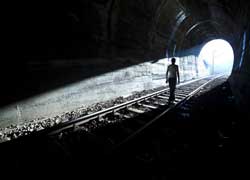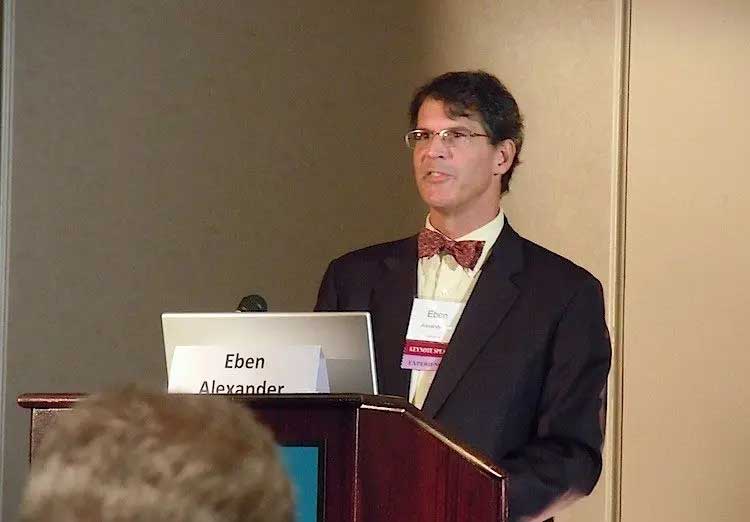Near-death experiences: 30 years of research
 Part 1
Part 1
Grandma has just been resurrected. She wakes up and tells a bizarre story of leaving her body and going to heaven. Had she developed psychosis? Has her brain been damaged from lack of oxygen?
After more than 30 years of research, scientists have concluded that this is not the case. Instead, they think that this phenomenon is something that today's science has yet to understand, and that it is an opportunity for science to advance.
The phenomenon was called near-death experiences (NDEs) in the 1975 book "Life After Life" by Raymond Moody, MD and PhD in philosophy and psychology. Generally, NDEs include cognitive, affective, paranormal, and transcendental experiences.
Examples of NDEs include experiencing a shift in perception and thinking, feeling peace or tranquility, gaining extrasensory perception (ESP), experiencing a life review, seeing the effects of one's actions on others, the feeling of leaving one's body, seeing dead people and other beings, like angels, and feeling like entering another dimension.
NDEs are found in all types of people, and many studies find a 10-20% prevalence of NDEs in people who have been close to death.
Interest in studying NDEs was triggered after the publication of Moody's book. So, in 1981, the International Association for Near-Death Studies (IANDS) was founded "to promote responsibly, multidisciplinary exploration of near-death and similar experiences, their effects on people's lives, and their implications to beliefs about life, death, and human purpose,” according to the IANDS website.
On September 2-4, 2011, IANDS hosted a conference in Durham, NC, USA for NDE researchers to present their findings.
Improvement of mental functions in a weakened brain
Bruce Greyson, MD and director of the Division of Perception Studies at the University of Virginia, said that NDEs are reliable because witness accounts of NDEs remain unchanged over time. He compared a group of NDEs reports 20 years earlier and found that they remained virtually identical over time.
Greyson believes that NDEs are an indication that the mind is independent of the brain, because one would expect impaired brain function in the clinical situations in which NDEs occur, but his research has found no corresponding impairment in mental function in NDEs.
"In most cases, people's mental functioning is better in NDEs than they are during our normal waking lives," Greyson said during an interview with The Epoch Times.
“Their thinking is faster, clearer and more logical, they have more control over their train of thought, their senses are sharper, and their memories are more vivid.”
“If you ask someone about their near-death experience that happened 15 years ago, they tell it as if it happened yesterday. If you ask them [about] other experiences in their life, they are very mixed memories, if they even have any.”
“[…] When you think about these experiences, which are characterized by elaborate thought processes [that] occur when the brain is not working well or sometimes not working at all, because it is under cardiac arrest or deep anesthesia, moments when that brain science would tell us that you shouldn't be able to think, perceive, or form memories, it becomes pretty clear that we can't explain these things on the basis of brain physiology.”

Eben Alexander spoke at the conference of the International Association of Near-Death Studies
(IANDS) about his near-death experience and his interpretation of this phenomenon
Eben Alexander, MD, a neurosurgeon who also spoke at the conference, had an NDE. In 2008, he contracted acute bacterial meningitis, which damages the neocortex, and fell into a coma, spending six days on a ventilator. Her cerebrospinal fluid glucose level has reached 1 mg/dl (milligram per deciliter), whereas normal levels are between 60 and 80 mg/dl. When the level drops to 20 mg/dl, meningitis is considered severe. For days after the coma, Alexander struggled to speak and recall pre-coma memories. Someone with this type of severe brain damage is not expected to fully recover.
However, during his NDE, Alexander had such vivid experiences that involved multiple senses, such as sight, hearing and smell, that he said he couldn't describe how incredible it was.
"My brain now, I believe it has recovered well, it can't do anything close to what my brain was doing," Alexander said. “How does a dying brain get so much more powerful and able to handle these huge loads of instantaneous information and put it all together?”
Shared death experiences
Another phenomenon related to NDEs is shared death experiences (NDEs), in which a person who is close to another person on the verge of death experiences something with the same characteristics as NDEs.
Moody first heard about NDEs in 1972 from a medical professor. The teacher's mother had a heart attack, and when she was trying to resuscitate her mother, she felt herself leaving her body and saw her body trying to resuscitate her mother's body. As her mother died, she saw her mother in spirit form, and the spirit meeting other beings, some of whom she could recognize as people her mother had known. Then her mother and the other people were sucked into a tunnel.
After more than 30 years of research, Moody estimates that NDEs are as common as NDEs. As he has studied many of these cases over the years, he has found that the characteristics of NDEs are similar to those of NDEs.
One of the most common characteristics of NDEs is that the person sees the spirit of the dying person, which appears as a transparent replica of the person, with an oval shape or like a sphere of light that comes out of the head or chest of people's physical bodies. who die, Moody said in an interview with The Epoch Times.
Sometimes the viewer also experiences the dying person's life review. A woman in Georgia was documented as having spoken with her husband's spirit when she saw his life review as he died. She also saw a being that she identified as the daughter she and her husband had lost in an abortion.
Moody thinks that NDEs act as strong evidence for the view that the mind exists independently of the brain, because the people who experience them do not have any impairments in the functioning of their brains.
"All of the documents that I've identified as being early near-death experiences that I studied years ago are also present in people who have these near-deathbed experiences, and who are not sick or injured," Moody said during his presentation. at the conference.
“There is nothing wrong with the flow of oxygen to their brains, and they have the same identical experiences that I hear from people who have been close to death.”
Even stronger evidence, recounted by Moody in the Epoch Times interview, was the case of a priest and a nun in South Africa who had a car accident together in which they both experienced cardiac arrest followed by an NDE. After they were resurrected, both shared the experience of leaving their bodies and entering a light, in identical detail.
With the amount of research over the last 30 years, Moody said that “there is now a genuine, and I would stress the 'genuine', solid step towards and rational understanding of the afterlife . ”
Likewise, Greyson said, "The science of near-death experiences is much more advanced now than it was 30 years ago."
However, Greyson feels that there is still more to be done in the area of near-death studies, especially with modern tools and techniques that we didn't have before, and he hopes that in the future we will learn more about NDE causes.
"I think we've only scratched the surface of NDEs," Greyson said.
“Some people with a religious or spiritual mindset will tell you that these experiences are given to us as a gift or are the result of some supernatural cause, and I still don't know how to express that in scientific terms. But I think science is a dynamic enterprise, not a static thing, and that sooner or later we're going to find a way in scientific terms to talk about something beyond the physical or the psychological, and that's organized in a scientific way.”
"I believe that great future advances will be in how NDEs affect people's lives and personality development, and by establishing values, beliefs, attitudes and different ways we can help people benefit from near-death experiences."
Raymond Moody on Shared Death Experiences



